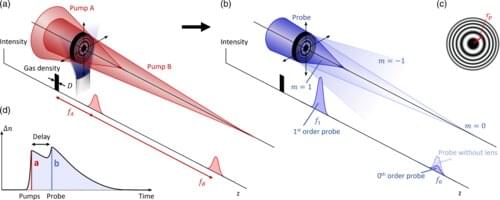A team of researchers from Lawrence Livermore National Laboratory, the University of California at Berkeley and Princeton University has developed plasma-based techniques to build a lens for laser beams with petawatt-scale power. In their paper published in the journal Physical Review Letters, the group describes the two techniques they developed.
Physicists conducting work with particle accelerators and fusion research efforts are hopeful that other researchers will build lasers that are more powerful than those currently available. Such work has been held up by the solid-state optics technology used to create lasers—giving them more power would damage the parts used to generate the laser, making them useless. In this new effort, the researchers noted that other researchers have found that plasma can be used to create optic components such as amplifiers and mirrors. They wondered if the same might be true for the kind of lens needed to produce extremely powerful laser beams. They came up with a concept that involved inducing patterns of high and low density in a given plasma. Light moving through it, they note, would experience a phase shift based on the density of the plasma.
The researchers did not actually build such a laser, but instead, proposed two ways that it might be built. The first method involved firing two pump lasers at a gas sample. The first laser ionized the gas into a plasma, while the second did not. The result was a plasma with a bulls-eye configuration of high and low-density plasma rings, which could be used as a laser lens.
